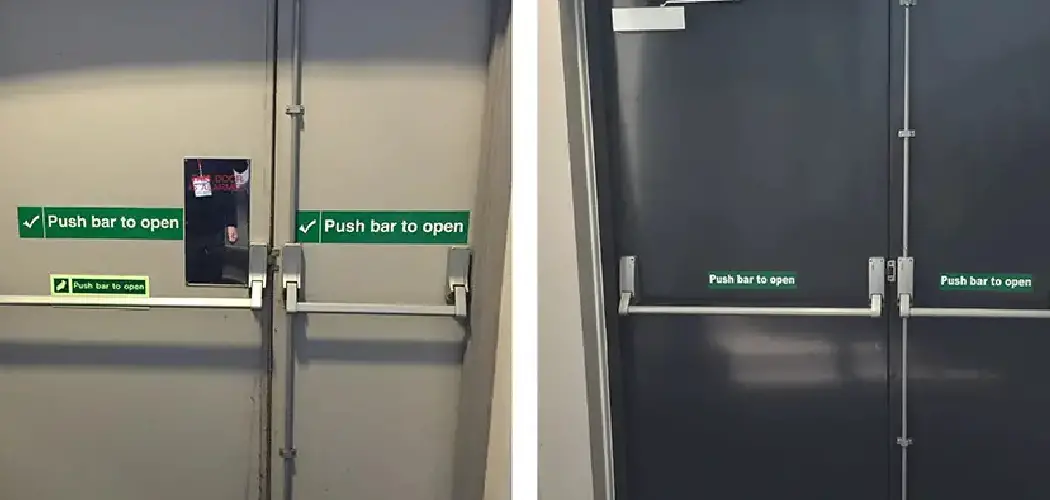Doors are vital components of a building, providing access and security while also serving as fire barriers. Depending on the type of building, certain doors may need to be fire-rated in order to meet safety codes and regulations.
Fire-rated doors are designed and tested to withstand fire for a specific amount of time, allowing people more time to escape in the event of a fire. But how can you tell if a door is fire-rated? This guide will provide you with some tips and tricks on how to tell if door is fire rated to help you identify fire-rated doors.
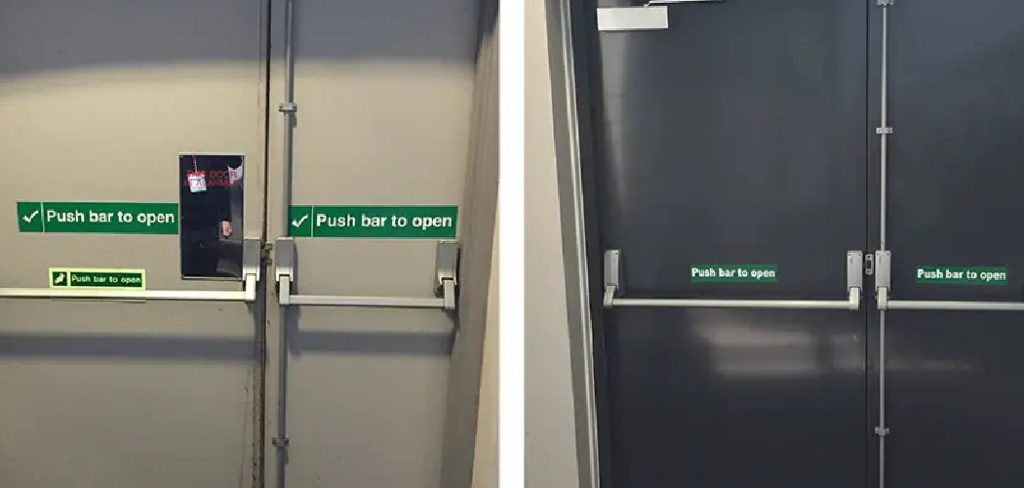
Necessary Items
Before we dive into how to tell if a door is fire-rated, it is important to understand the necessary items that are required for a fire-rated door. These include:
- Fire Label: A fire label or certification mark is typically located on the edge of the door and indicates that the door has been tested and deemed fire-rated.
- Intumescent Seal: This seal is located in the door frame and expands when exposed to heat, creating a barrier against smoke and fire.
- Fire-Rated Door Hardware: Fire-rated doors require specific hardware, such as hinges, locks, and closers, that have been tested and approved for use on fire-rated doors.

12 Steps on How to Tell if Door is Fire Rated
Step 1: Understanding Fire Ratings
Before we dive into identifying fire-rated doors, it’s important to understand the different types of fire ratings. The most common rating system is based on time, such as 20 minutes, 45 minutes, and 90 minutes. This indicates the amount of time the door can withstand fire before it begins to fail.
Step 2: Look for a Fire Label
The easiest way to tell if a door is fire-rated is by looking for a fire label or certification mark on the edge of the door. This label should indicate the fire rating and other necessary information. If you cannot find a label, it is safe to assume that the door is not fire-rated.
Step 3: Check the Bottom of the Door
In some cases, the fire rating label may be located on the bottom of the door instead of the edge. This is more common for wooden doors. And remember, if there is no label, the door is likely not fire-rated.
Step 4: Inspect the Door Frame
Along with the door itself, the frame must also be fire-rated. Look for a metal or steel label on the frame that indicates a fire rating. If there is no label, it could mean that the frame has not been tested and approved for use with a fire-rated door.
Step 5: Check the Door Hardware
As mentioned before, fire-rated doors require specific hardware that has been tested and approved. This includes hinges, locks, and closers. Look for labels on these items or ask a professional to inspect them.
Step 6: Measure the Thickness of the Door
Fire-rated doors are typically thicker and heavier than standard doors. Measure the door’s thickness to see if it falls within the range of a fire-rated door. Keep in mind that this can vary based on the type and rating of the door.
Step 7: Look for a Solid Core
Fire-rated doors are typically made with solid cores, such as mineral or honeycomb cores. If you can see light through the door when it is closed, chances are it is not fire-rated. When in doubt, consult a professional to confirm.
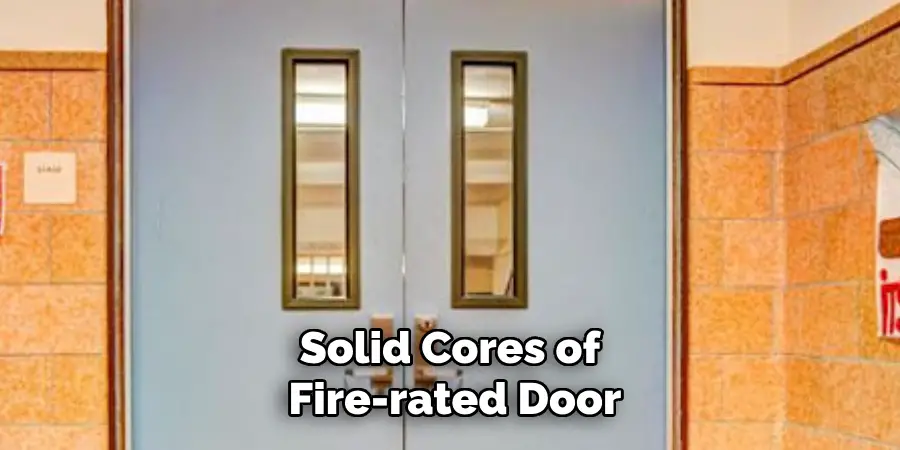
Step 8: Check the Material
Fire-rated doors can be made from various materials, including wood, metal, and glass. However, not all materials are suitable for fire ratings. For example, a hollow metal door may not be fire-rated unless it is filled with an appropriate core material.
Step 9: Look for Smoke Seals
Along with an intumescent seal, fire-rated doors may also have smoke seals, which are located at the top and sides of the door. This helps prevent smoke from entering a room during a fire. Just like the intumescent seal, these should expand when exposed to heat.
Step 10: Inspect for Automatic Closers
Fire-rated doors are required to have automatic closers that will close and latch the door in case of a fire. If you see a closer on the door, it is a good indication that it is fire-rated. While not all doors with closers are fire-rated, it is uncommon for a fire-rated door not to have one.
Step 11: Look for fire-rated Glass
If a fire-rated door has glass, it must also be fire-rated. This can usually be identified by a label or marking on the glass itself. If there is no indication of its fire rating, it may not be suitable for use on a fire-rated door.
Step 12: Consult a Professional
If you are still unsure if a door is fire-rated after completing the previous steps, it is best to consult a professional. They can inspect the door and its components thoroughly and provide you with an accurate answer.
Being able to identify whether or not a door is fire-rated is crucial for ensuring the safety of a building and its occupants. By understanding the necessary items and following these steps on how to tell if door is fire-rated, you can confidently determine if a door is fire-rated or not.
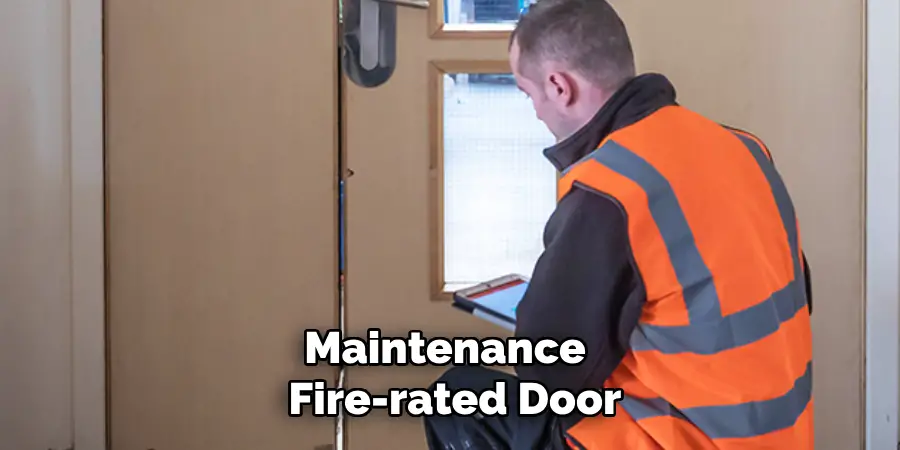
Remember, when in doubt, always consult a professional for their expert opinion. However, it’s important to note that even though a door may be fire-rated, it still requires proper maintenance and regular inspections to ensure it continues to meet safety standards.
9 Safety Measures for Fire-Rated Doors
While fire-rated doors are designed to withstand fire, it is important to take additional safety measures to ensure their effectiveness. Here are some tips:
1) Keep the Door Closed at All Times
Fire-rated doors are only effective when they are closed. Make sure to keep them closed at all times and avoid propping them open. Just a few seconds of an open door can compromise the integrity of a fire-rated door.
2) Keep the Door Clear of Obstructions
Make sure there are no items blocking or obstructing the door from closing properly. This includes furniture, decorations, and equipment. Also, avoid hanging items on the door itself. These can prevent the door from closing completely, leaving a gap for smoke and fire to enter.

3) Regularly Inspect and Maintain Door Hardware
As mentioned before, fire-rated doors require specific hardware that must be regularly inspected and maintained. This includes hinges, locks, closers, and other components. Any damaged or worn parts should be replaced immediately to ensure the door continues to meet safety standards.
4) Train Building Occupants on Proper Usage
It’s important for building occupants to know how to properly use fire-rated doors, including keeping them closed and clear of obstructions. Regular training or reminders can help ensure everyone is aware of the importance of these doors in case of a fire emergency.
5) Install Fire Alarms and Sprinkler Systems
Fire-rated doors are just one element of a building’s fire protection system. Installing fire alarms and sprinkler systems can help detect and suppress fires, giving people more time to evacuate safely. So, make sure these systems are regularly inspected and maintained as well.
6) Conduct Emergency Drills
In addition to training on proper usage, conducting emergency drills can help occupants understand their roles and responsibilities in case of a fire. This includes knowing how to evacuate the building safely and efficiently, which may involve using fire-rated doors.
7) Keep Fire Extinguishers Nearby
Having fire extinguishers readily available can help prevent small fires from spreading and potentially compromising the integrity of fire-rated doors. Make sure they are easily accessible and regularly inspected.
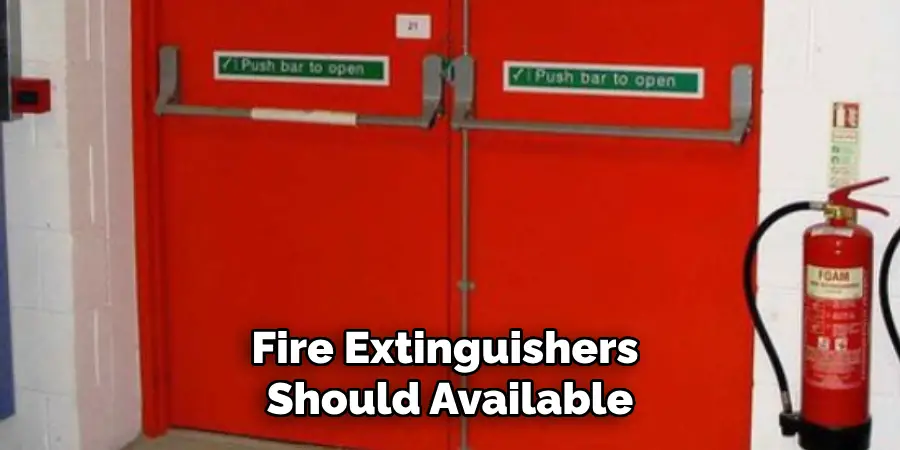
8) Regularly Inspect Fire-Rated Glass
If your fire-rated door has glass, it is important to regularly inspect and maintain it as well. This includes keeping it clean and free of any cracks or damage.
9) Follow Building Codes and Regulations
Lastly, it is crucial to follow all building codes and regulations when it comes to fire-rated doors. This includes proper installation, maintenance, and usage. Non-compliance can result in fines, legal consequences, and, most importantly, compromised safety in case of a fire emergency.
By following these safety measures, you can ensure that fire-rated doors continue to serve their purpose and protect occupants in case of a fire. As they say, prevention is better than cure, so taking the necessary precautions now can save lives in the future. So remember to always keep fire-rated doors closed, clear of obstructions, and well-maintained.
8 Things to Avoid with Fire-Rated Doors
While there are safety measures to follow, there are also things that should be avoided when it comes to fire-rated doors. These include:
1) Painting or Altering the Door Without Approval
Fire-rated doors must meet specific standards, and alterations can compromise their effectiveness. Any changes, including painting the door, should always be approved by a professional.
2) Blocking or Sealing Vents on the Door
Fire-rated doors often have vents that allow smoke and heat to escape, helping them maintain their integrity. These vents should never be blocked or sealed as they can prevent proper ventilation during a fire.
3) Overlooking Regular Inspections and Maintenance
Regular inspections and maintenance are crucial for ensuring fire-rated doors continue to meet safety standards. Overlooking or neglecting these tasks can compromise the effectiveness of the door.
4) Using Non-Fire-Rated Hardware
As mentioned before, fire-rated doors require specific hardware that is designed to withstand high temperatures and prevent fire from spreading. Using non-fire-rated hardware can greatly reduce the door’s effectiveness in case of a fire emergency.
5) Propping Doors Open
Propping open fire-rated doors, even for a short amount of time, can greatly reduce their effectiveness. It is important to always keep these doors closed to prevent the spread of fire and smoke.
6) Ignoring Warning Signs or Labels
Fire-rated doors often have warning signs or labels indicating their purpose and usage. It is important to always follow these instructions and not ignore or remove any labels. If there are any signs of damage or wear, they should be addressed immediately.
7) Leaving Doors Unlocked
Fire-rated doors should always be kept locked to prevent unauthorized access and ensure their effectiveness. It is important to have a plan in place for unlocking these doors in case of an emergency.
8) Using Fire-Rated Doors as Regular Doors
Lastly, it is important to remember that fire-rated doors have a specific purpose and should not be used as regular doors. This includes using them for daily access or propping them open for ventilation.
By avoiding these actions, you can help ensure that fire-rated doors remain effective in case of a fire emergency. Remember to always treat these doors with care and follow safety guidelines to keep everyone in the building safe. So, spread the word and educate others on the importance of fire-rated doors in protecting lives and properties during a fire emergency.
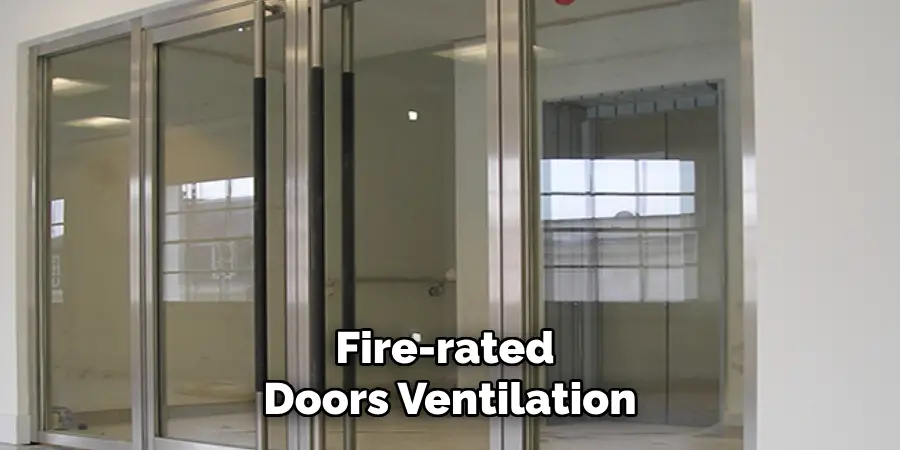
8 Additional Tips for Fire Safety
While fire-rated doors are an important aspect of fire safety, there are many other precautions that should be taken to prevent and prepare for a fire emergency. Some additional tips include:
1) Regularly Test Smoke Alarms
Smoke alarms can alert you to the presence of a fire in its early stages, giving you more time to evacuate safely. Make sure to test your smoke alarms regularly and replace the batteries at least once a year.
2) Have an Emergency Plan
In addition to conducting emergency drills, it is important to have a well-thought-out emergency plan in place. This should include evacuation routes, designated meeting points, and procedures for individuals with special needs.
3) Designate Fire Exits and Keep Them Clear
Fire exits should always be clearly marked and kept clear of any obstructions. This ensures that occupants can evacuate quickly and safely in case of a fire emergency. Also, make sure all doors leading to fire exits are functioning properly.
4) Keep Flammable Items and Chemicals Stored Safely
Flammable items and chemicals should always be stored in approved containers and kept away from potential sources of ignition. Proper storage can help prevent fires from starting and spreading.
5) Educate Occupants on Fire Safety
Educating occupants on fire safety measures, including the proper usage of fire-rated doors, can greatly improve their chances of surviving a fire emergency. Make sure to conduct regular training sessions and provide informational materials.
6) Have Fire Extinguishers Available
Having fire extinguishers available throughout the building can help contain small fires before they have a chance to spread. Know where these extinguishers are located and how to use them properly.
7) Regularly Inspect Electrical Systems
Electrical malfunctions are a leading cause of fires, so it is important to regularly inspect and maintain all electrical systems in the building. This includes checking for any frayed wires or overloaded circuits.
8) Stay Vigilant and Report Any Potential Hazards
Lastly, it is important to always be vigilant and report any potential hazards or safety concerns immediately. This can include faulty equipment, damaged fire-rated doors, or blocked fire exits.
By following these additional tips on how to tell if door is fire rated for fire safety, you can help prevent fires from occurring and ensure that everyone in the building is prepared in case of an emergency. Remember that awareness and prevention are key when it comes to fire safety.
Frequently Asked Questions
What is the Purpose of Fire-rated Doors?
Fire-rated doors are designed to prevent the spread of fire and smoke, giving occupants more time to evacuate safely during a fire emergency. They also help protect the structural integrity of the building.
How Often Should Fire-rated Doors Be Inspected?
Fire-rated doors should be inspected at least once a year by a professional. However, it is recommended to have them inspected more frequently, such as every six months, to ensure they remain in good condition.
Can Fire-Rated Doors Be Painted?
Yes, fire-rated doors can be painted, but it is important to use paint that is specifically designed for use on fire-rated doors. Using improper paint can compromise the effectiveness of the door.
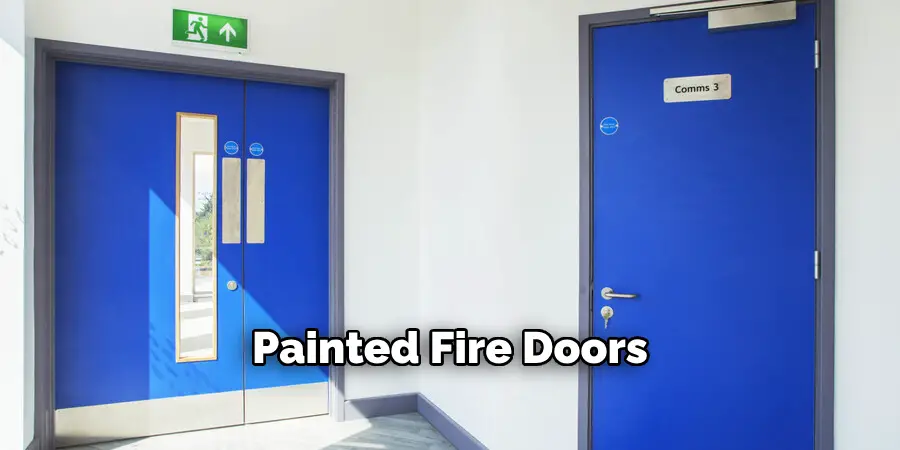
Can Fire-Rated Doors Be Used as Regular Doors?
No, fire-rated doors should only be used for emergency exits and not as regular doors. Using them as daily access points or propping them open can greatly reduce their effectiveness in case of a fire emergency.
Can Fire-Rated Doors Be Opened from the Inside?
In most cases, fire-rated doors can be opened from the inside. However, some buildings may have certain procedures in place for unlocking these doors during an emergency. It is important to familiarize yourself with these protocols. So, it is always crucial to follow the instructions and warnings on fire-rated doors to ensure their effectiveness in case of a fire emergency.
Conclusion
Fire-rated doors are a crucial component of fire safety in buildings. They provide protection and help prevent the spread of fire, giving occupants more time to evacuate safely. It is important to properly maintain and use these doors according to their intended purpose to ensure their effectiveness during a fire emergency.
By following these additional tips on how to tell if door is fire-rated for fire safety, you can help prevent fires from occurring and ensure that everyone in the building is prepared in case of an emergency. Remember that awareness and prevention are key when it comes to fire safety.
Additionally, following other fire safety precautions and educating others on the importance of fire safety can greatly improve the chances of surviving a fire. By working together to prioritize fire safety, we can help protect lives and properties from the devastating effects of fires. So, always remember: prevention is key when it comes to fire safety. So, let’s do our part in promoting fire safety and protecting our communities.

